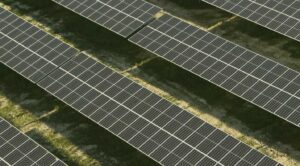The Victorian Essential Services Commission has proposed a reduction in the rate rooftop solar generators will receive for the electricity they supply to the grid.
In a draft decision, the commission has suggested solar households should receive 5 cents per kilowatt hour for exported electricity from January next year, representing a reduction of 19% from the current rate.
What does this mean for solar households?
The recent uncertainty around the renewable energy target has had a significant impact on large-scale projects, with investment down by 88% in 2014.
Small-scale renewables, on the other hand, grew relatively steadily over that the same period. The amount of small-scale solar is expected to continue to grow by 3,700 megawatts between 2015 and 2020.
In Australia, solar photovoltaic (PV) cells have principally been supported by both the Renewable Energy Target (RET) and state-based feed-in tariffs.
The Small-scale Renewable Energy Scheme provides an upfront subsidy for owners of eligible technologies (such as solar PV). These certificates are granted up front, are managed by solar installers, and are reflected in lower costs for solar systems. There was also a “multiplier” that increased the number of certificates for the first solar installations.
Feed-in tariffs on the other hand provide ongoing revenue for energy generated by small generators.
In Australia, feed-in tariffs have been set and regulated by state governments. Earlier feed-in tariff schemes were poorly designed, and unequipped to deal with the rapid cost reductions experienced by solar PV systems, with the cost of modules falling 80% between 2008 and 2012.
High feed-in rates (as high as a gross 60 cents per kWh in NSW) combined with lower system costs, resulted in windfall profits for some owners, and increased costs for other electricity consumers. This NSW tariff was estimated to increase electricity costs by A$0.005 per kilowatt hour, adding approximately A$32 to the average NSW bill (though such analysis often ignored the merit order effect).

Falling tariffs
As a result, feed-in tariffs have been dramatically reduced. They are now predominately within the 6-8 cent range, and have been set by state regulators to reflect the so-called “fair” value of solar.
Feed-in tariffs are also now predominately paid on a net basis: only the energy exported to the grid recieves the tariff. However, because electricity prices are many times higher than solar tariffs, it may be cheaper for households to use their solar power.
This provides an incentive for consumers to buy solar systems that match how they use electricity. Low feed-in rates encourage more self consumption (and typically smaller systems) and high feed-in tariffs encourage more export (and typically larger systems).
It is very difficult to tease out the exact drivers of solar installations, and the impact of different support policies. There are falling solar costs, increasing retail prices, the affect of the carbon price (and it’s removal) and increasing consumer engagement and awareness of energy issues to compete with.
However, historical installation rates are instructive. The figure below illustrates how installation rates varied in Queenland, as both multipliers (the Renewable Energy Target certificates) and feed-in tariffs changed.
The customers that installed an energy system by 30 June 2013 were eligible for the 44 cents per kWh, while those after only receive 8 cents. As can be expected, the size of systems installed decreased as consumers presumably opted for smaller systems (and less exports).

What is solar power worth?
The rate exported power is credited for clearly changes the economics of solar. The questions is, is it really worth 5 cents?
The older and higher feed-in tariffs were set at rates intended to encourage the installation of renewable generators, including solar PV on homes and other buildings, and to reduce greenhouse gas emissions.
With the introduction of the carbon tax, the need for feed-in tariffs was questioned, and all across the nation various renewable and other emission abatement programs were rationalised.
In 2012, the Victorian Competition and Efficiency Commision was tasked with an inquiry into distributed generation, a main function of which was to:
Assess the design, efficiency and effectiveness of feed-in tariff schemes, including market-based gross feed-in tariff schemes, in the context of a national carbon price.
This report argued that the value for distributed generation output is best captured through a wholesale-based price (which includes the carbon tax) set by the competitive wholesale electricity market.
This approach has previously been reiterated by the Essential Services Commision:
The Commission considers that an important environmental benefit is reduced
carbon emissions, and the value of this environmental benefit has been taken into
account as the carbon tax is factored into the price of electricity.
As the we have argued in our submission to this inquiry, this wholesale-based based approach no longer makes sense, and does not at all capture the “important environmental benefit” now that the carbon tax has been removed.
With an increasing interest in state action on climate change (including Victoria) it remains to be seen how the Victorian Essential Services Commission and other jurisdictional regulators value zero emission technologies.
Source: The Conversation. Reproduced with permission.









